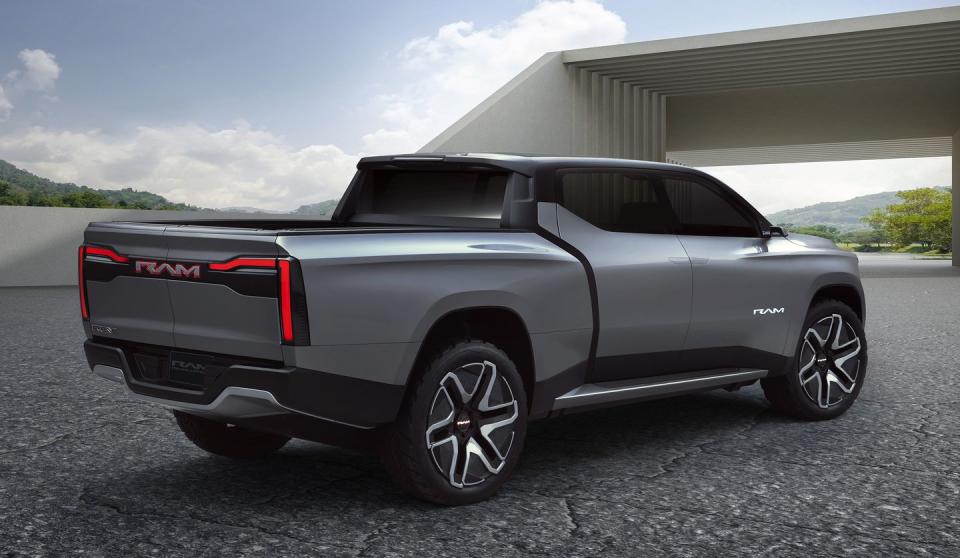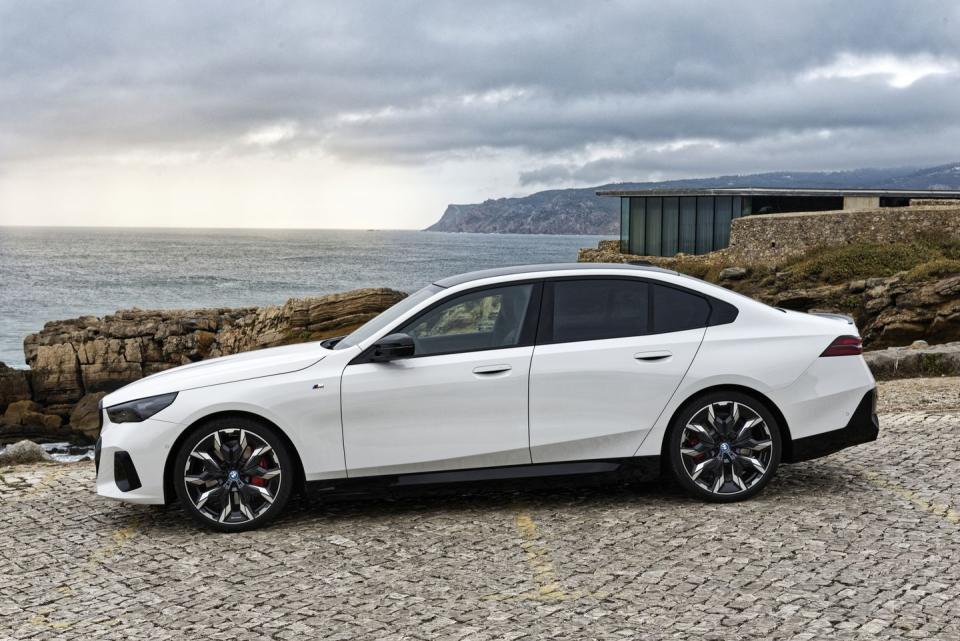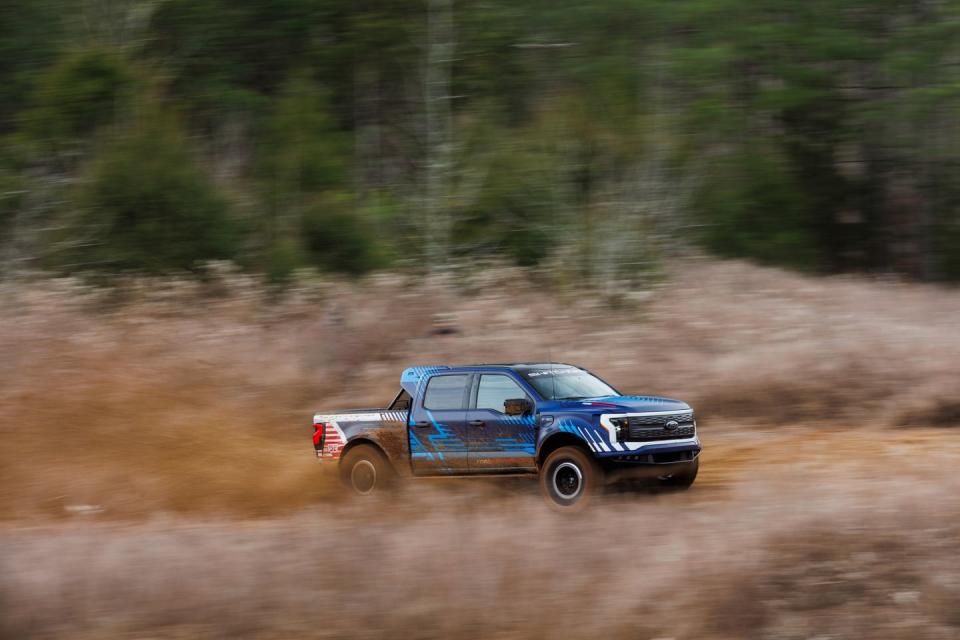What’s Next for Electric Vehicles as Market Turns Murky?

Stellantis will become EV-centric no earlier than 2040, and until then “a considerable number of vehicles” will have internal-combustion power, analyst Sam Fiorani says.
Tesla plans a next-generation “platform” designed to accommodate all its models to further cut production costs.
Conventional wisdom since the slowdown in EV demand is that sales increases toward an all-EV future will not be linear. Still, GM appears poised to become the first major automaker to end ICE production in the coming decade.
Dedicated electric vehicle platforms are not the future, even if EVs designed from the ground up are cheaper to build than those adapted from internal-combustion-powered vehicles.
And major automakers with separate EV marketing channels, like Mercedes-Benz’s EQ, BMW’s i Series and Toyota’s BZ are about to give up those sub-brands, says AutoForecast Solutions in its monthly newsletter.
“Manufacturers around the world are developing more dynamic platforms for their future products,” Sam Fiorani, vice president for Global Vehicle Forecasting for AFS and co-author of AFS Monthly’s special report on the auto industry’s EV transition, tells Autoweek via email.
“As with Stellantis’ STLA platforms, these modern architectures allow more freedom between powertrains so that automakers can adapt to consumer demand. Dedicating platforms and plants to one type of powertrain ties up so much cost that can’t be properly utilized if demand shifts away from that particular drivetrain,” Fiorani says.
“This will be especially important over the next 10 to 15 years as ICE continues to dominate but battery-electric powertrains will be necessarily phased in over time.”
The auto market will become EV-centric no earlier than 2040, Fiorani says, and until then “a considerable number of vehicles” will have internal-combustion power.

Stellantis’ STLA platforms are “BEV-native,” though they look like conventional ICE underpinnings and in fact can be adapted to support hybrid, plug-in hybrid, and gasoline engines as well.
This differs from how Ford engineered its all-electric F-150 Lightning, which is built off a conventional gas-powered F-150’s body-on-frame chassis.
Contrast STLA with General Motors’ EV-only Ultium “skateboard” platform, designed for everything from the next-generation Chevrolet Bolt to the Cadillac Celestiq and GMC Hummer.
Ford will follow suit with its next generation of EV models, including an F-150 Lightning it says will be much cheaper to build.
Manufacturing an EV as an EV from the ground up is considered a big step toward cutting engineering and manufacturing costs so that they’re closer to that of ICE-powered vehicles.
During its 2023 earnings results call with Wall Street analysts last February, Ford CEO Jim Farley revealed the automaker has a “skunkworks” developing its next-generation EVs, which he said will be profitable within a year of launch.
Even Tesla plans a next-generation “platform” designed to accommodate all its models to further cut production costs.
Other automakers wanting to become major EV manufacturers are following GM’s and Ford’s lead in naming their electric models under the same sub-brands as their conventional models, Fiorani says.
Whereas, say, the Cadillac Escalade iQ and the Ford F-150 Lightning are handled much like other ICE trim levels of the Escalade and F-150, BMW has “i,” Mercedes has “EQ,” and Volkswagen has “iD,” which “requires serious marketing money just to establish the names,” Fiorani says.
“Blending the EV models into the traditional nameplates carries over the inertia from popular names like 3-Series, E-Class, and Golf, keeping the buyers in the fold and saving money.”

It also allows automakers to add EV versions’ sales into the total with ICE versions. Ford, for example, includes the number of Lightnings it sells under the total F-Series tally, though it helpfully breaks out Lightning sales (E-Transit, too) into a separate line item.
While the Cadillac Escalade iQ initially was to become the only way you could buy a new Escalade SUV after its premier in 2027, GM is expected to continue offering its body-on-frame, ICE-powered Escalade, likely with a plug-in hybrid powertrain, for five to six years after the iQ goes on sale, according to AutoForecast Monthly.
This shift in EV plans falls in line with our February 20 scoop that GM has launched a crash-program to develop PHEV versions of its redesigned Chevrolet Silverado and GMC Sierra, expected by 2026.
The five- to six-year extension AFS reports means the ultimate ICE Cadillac Escalade would be a 2033 or ’34 model at the latest, departing in time for GM’s plans to go all-electric by 2035—coincidentally the same year that California will mandate sales of zero-emissions new vehicles only.
GM CEO Mary Barra was asked about this in an exclusive interview on NBC Nightly News recently. Her answer prompted the misleading online link to the NBC News interview, “All-electric commitment will now play out over decades, GM CEO says.”
Barra’s reply was, “We’ll be guided by the customers. It will be led by what customers want.”
A day later, NBC News changed the online headline to read, “GM CEO says commitment to all-electric fleet remains firm despite industry-wide sales slowdown.”
A spokesman confirmed to Autoweek that GM still plans an all-EV lineup by 2035. He also confirmed GM remains on-target to produce 1 million EVs in North America by 2025, and that it expects to build 200,000 to 300,000 EVs on the continent this year.
The “we” in Barra’s statement that “We’ll be guided by the customers” refers to the industry as a whole rather than GM, the spokesman said.
Shortly after, Automotive News reported that new EV motor production planned for GM’s St. Catharines Propulsion Plant in Ontario, Canada, was being delayed.

The story quoted the automaker responding that “We will continue with our long-standing strategy of building to demand for our propulsion technologies.”
As originally reported in The Standard newspaper of St. Catharines, Ontario, Unifor Plant Chairman Trevor Longpre told his Local 199 members in a memo posted online that the company on May 22 “verbally relayed news of the delay in the [BEV] project through group leaders without providing any further details to the membership or union leadership.”
GM has stopped V-6 output and laid off 300 workers at St. Catharines, which had employed about 1,100 union workers to build both V-6 and V-8 engines. GM’s original plan was to make 400,000 EV motors annually in the St. Catharines plant, according to Automotive News.
Conventional wisdom since the slowdown in EV demand is that sales increases toward an all-EV future will not be linear. St. Catharines aside, GM looks to be in position to become the first major automaker to end ICE production in the coming decade.
When NBC News’ Tom Costello asked Barra, “will you be just as committed to EVs if there’s a Trump administration?” Barra responded, “We’ll be just as committed because we think in the long term they’re better.” GOP presidential frontrunner Donald J. Trump has promised to kill off all federal EV incentives.
It doesn’t hurt that GM has already committed $35 billion to EV development from 2020 to 2025. That’s a lot of cash to throw away for a four-year presidential term.
If automakers continue embedding their electric vehicles within their existing lineups, do you think that will make EVs more attractive than presenting them in sub-brands? Please comment below.

 Yahoo Autos
Yahoo Autos 